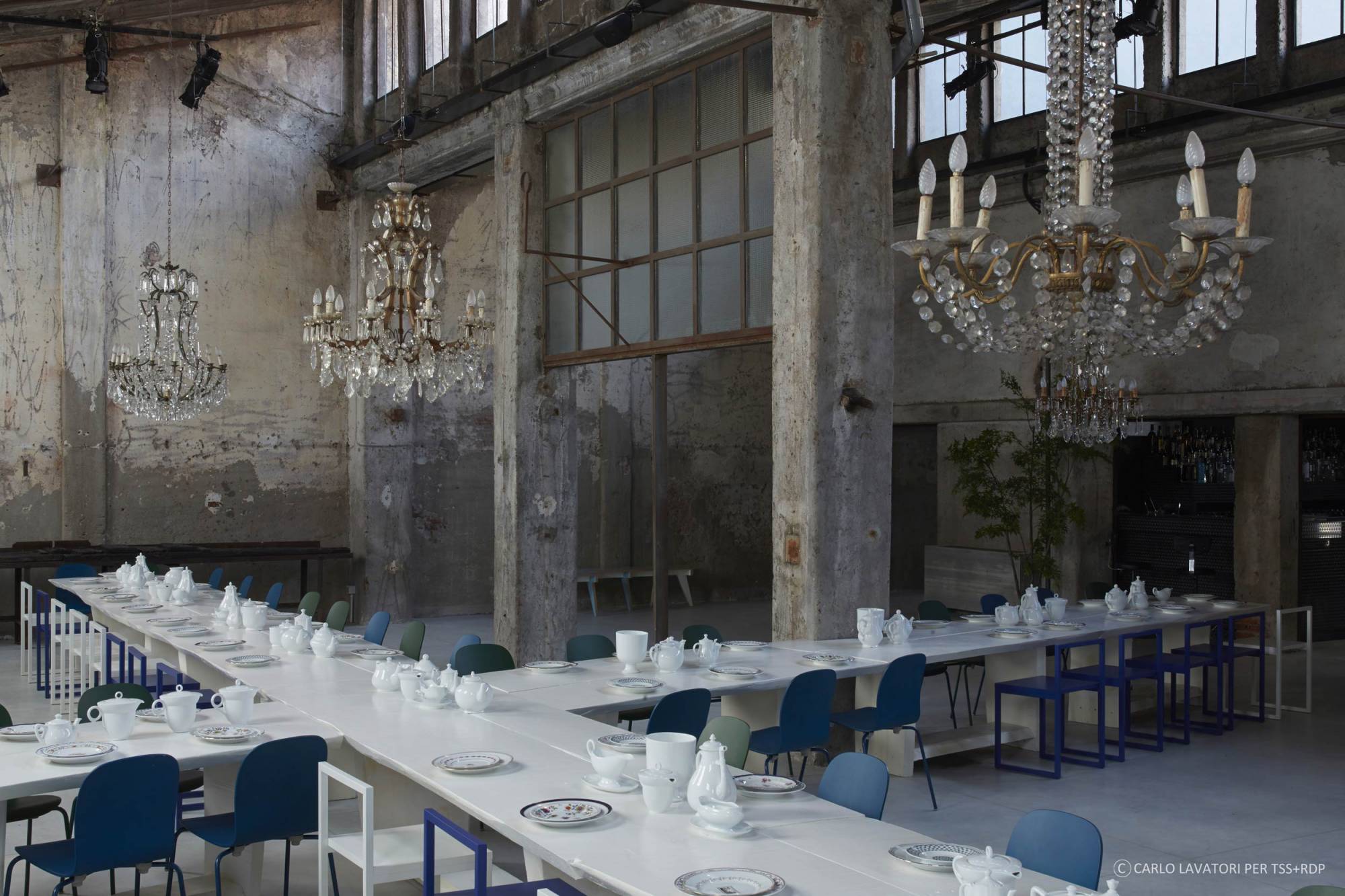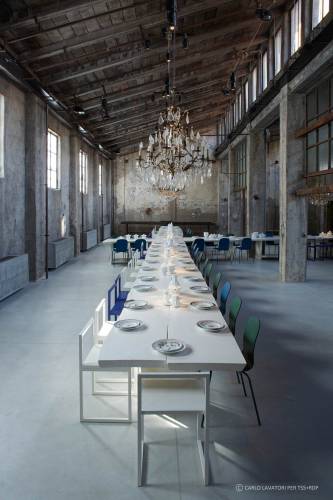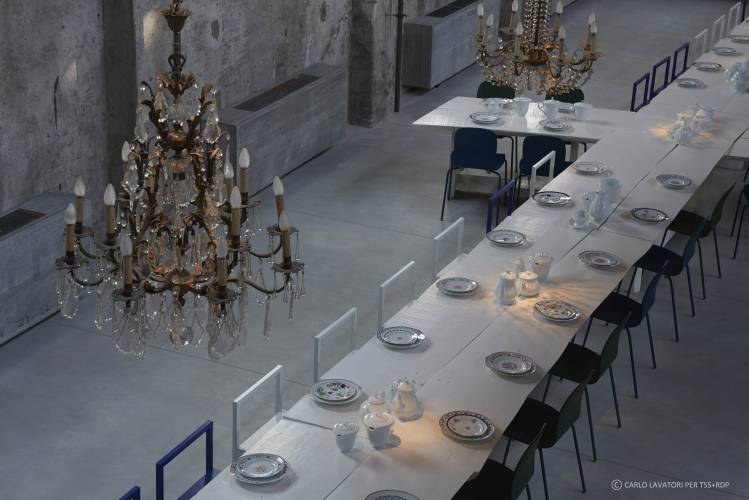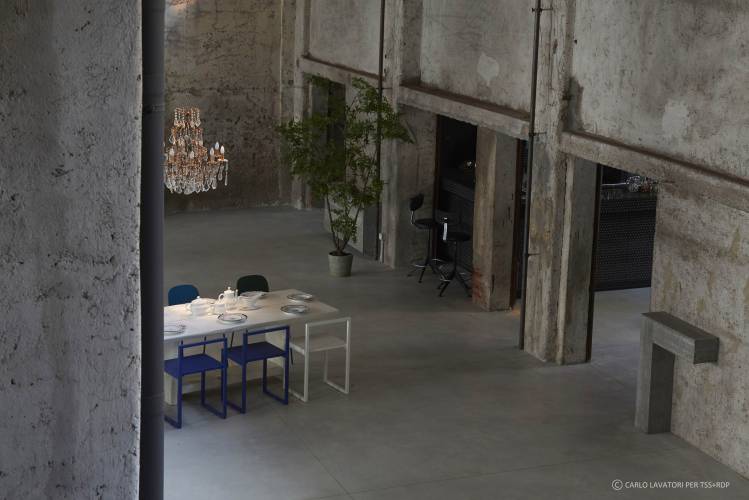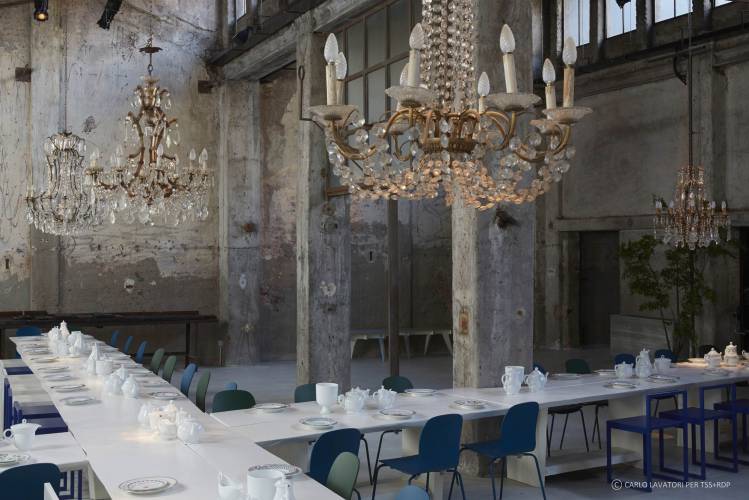Carlo & Camilla in the Sawmill
The new gastro bistro of Carlo Cracco, Tanja Solci and Nicola Fanti
PROJECT DATA SHEET
Sawmill is a historic Milanese factory.
Via Meda 24 was built in 1932. Following the bombing of World War II, it was partly rebuilt in 1946 with the building approach of the factories of the time. Brick and cement walls, a shed roof that allowed maximum use of natural light, perforated brick inner roof lining and tiled exterior. The business of manufacturing shipping crates closed in the late 1970s. Tanja Solci entered the building in 1999, which she renovated with the complicity of her father, taking on the appearance that everyone sees today. In the language of art, it is called 'conservative restoration', the same followed in this latest phase of adaptation (2014) led by Carlo Cracco, who transforms this place into a brand new factory bistro. Under the artistic direction of the owners, the work of adapting the building was masterfully directed by Engineer Umberto Montorfano of the Impresa Renato Montorfano, founded in 1949, who carried out the work by selecting a series of craftsmen still linked to the tradition and culture of restoration.
Concept, style and art direction: Tanja Solci
Graphic design: Roberto Da Pozzo
Image and graphic design expert, student of A.G. Fronzoni, art director of Uomo Vogue in the 1990s, image and advertising campaign curator for many major fashion brands. He has been collaborating with Tanja Solci for 10 years. It was his choice to entrust the illustrations to Gianluca Biscalchin.
Table and surroundings:
we have chosen to pay homage to the Italian culture and tradition of the art of table design and decoration: Cappellini and Richard Ginori.
Cappelini Production Seats:
Fronzoni '64 by A.G. Fronzoni
Tate by Jasper Morrison
Porcelain plates and centrepieces:
Richard Ginori
Plates: selected decors from the archive of discontinued pieces
Centrepieces: teapots of various shapes and styles, various sauce boats, stacked saucers and sugar bowls are all made of white porcelain. Defective pieces stopped before entering the decoration kilns.
The lighting is theatrical and kinematic.
It stems from the approach of Tanja Solci who has been characterising her installation work for 15 years with precisely this type of lighting. A kind of luminous tablecloth illuminates the hands of the diners, leaving the bodies in semi-darkness. The vintage chandeliers do not live by their own light but are illuminated from outside, some of their crystal drops reflecting on the table as if they were leaves.
The staff is dressed Massimo Alba
Many of the pieces displayed between the courtyard and the interior of the space are from the Tanja Solci studio's private collection.
These include many vintage items from the 1950s and 1960s and as many by important contemporary designers and planners such as: Ron Arad, Ross Lovegrove, Harry Allen, Droog Design, Sputnik, Jerzy Seymour and many others.

